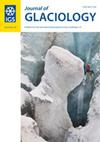Semantic segmentation of glaciological features across multiple remote sensing platforms with the Segment Anything Model (SAM)
IF 2.6
3区 地球科学
Q2 GEOGRAPHY, PHYSICAL
引用次数: 0
Abstract
Semantic segmentation is a critical part of observation-driven research in glaciology. Using remote sensing to quantify how features change (e.g. glacier termini, supraglacial lakes, icebergs, crevasses) is particularly important in polar regions, where glaciological features may be spatially small but reflect important shifts in boundary conditions. In this study, we assess the utility of the Segment Anything Model (SAM), released by Meta AI Research, for cryosphere research. SAM is a foundational AI model that generates segmentation masks without additional training data. This is highly beneficial in polar science because pre-existing training data rarely exist. Widely-used conventional deep learning models such as UNet require tens of thousands of training labels to perform effectively. We show that the Segment Anything Model performs well for different features (icebergs, glacier termini, supra-glacial lakes, crevasses), in different environmental settings (open water, mélange, and sea ice), with different sensors (Sentinel-1, Sentinel-2, Planet, timelapse photographs) and different spatial resolutions. Due to the performance, versatility, and cross-platform adaptability of SAM, we conclude that it is a powerful and robust model for cryosphere research.基于分段任意模型(SAM)的多遥感平台冰川特征语义分割
语义分割是冰川学观测驱动研究的重要组成部分。利用遥感来量化特征如何变化(例如冰川末端、冰川上湖泊、冰山、裂缝)在极地地区尤为重要,因为极地地区的冰川特征在空间上可能很小,但反映了边界条件的重要变化。在本研究中,我们评估了Meta AI Research发布的分段任何模型(SAM)在冰冻圈研究中的效用。SAM是一个基本的人工智能模型,无需额外的训练数据即可生成分割掩码。这在极地科学中是非常有益的,因为预先存在的训练数据很少存在。广泛使用的传统深度学习模型(如UNet)需要数以万计的训练标签才能有效地执行。我们表明,在不同的环境设置(开放水域、msamdange和海冰)、不同的传感器(Sentinel-1、Sentinel-2、Planet、延时照片)和不同的空间分辨率下,Segment Anything模型对不同的特征(冰山、冰川终端、超冰川湖泊、裂缝)表现良好。由于SAM的性能、通用性和跨平台适应性,我们认为它是一个强大而稳健的冰冻圈研究模型。
本文章由计算机程序翻译,如有差异,请以英文原文为准。
求助全文
约1分钟内获得全文
求助全文
来源期刊

Journal of Glaciology
地学-地球科学综合
CiteScore
5.80
自引率
14.70%
发文量
101
审稿时长
6 months
期刊介绍:
Journal of Glaciology publishes original scientific articles and letters in any aspect of glaciology- the study of ice. Studies of natural, artificial, and extraterrestrial ice and snow, as well as interactions between ice, snow and the atmospheric, oceanic and subglacial environment are all eligible. They may be based on field work, remote sensing, laboratory investigations, theoretical analysis or numerical modelling, or may report on newly developed glaciological instruments. Subjects covered recently in the Journal have included palaeoclimatology and the chemistry of the atmosphere as revealed in ice cores; theoretical and applied physics and chemistry of ice; the dynamics of glaciers and ice sheets, and changes in their extent and mass under climatic forcing; glacier energy balances at all scales; glacial landforms, and glaciers as geomorphic agents; snow science in all its aspects; ice as a host for surface and subglacial ecosystems; sea ice, icebergs and lake ice; and avalanche dynamics and other glacial hazards to human activity. Studies of permafrost and of ice in the Earth’s atmosphere are also within the domain of the Journal, as are interdisciplinary applications to engineering, biological, and social sciences, and studies in the history of glaciology.
 求助内容:
求助内容: 应助结果提醒方式:
应助结果提醒方式:


